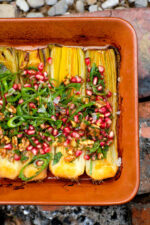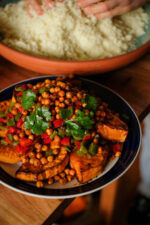Freshen Up Your Holiday Cooking
The holidays are known for their twinkling lights, colorful gift wrapping, and maybe even a white blanket of snow. But there’s a tastier element of the season that warrants months of anticipation: the food.
Depending on your family’s go-to recipes, you may sit down to a selection of roasted meats next to savory sides of pillowy mashed potatoes and perfectly crisp stuffing, all followed by a beautiful bounty of desserts. Who could resist throwing on an ugly sweater if this great feast is your reward?
However, such indulgence begs the question: Can holiday comfort food actually be healthy? The answer is yes—simply incorporate winter-ripened produce into your recipes. Try these tips to make your holiday table a nutrient-packed cornucopia so you can say hello to the season with a healthier appetite and fewer regrets.
Why choose fresh produce?
There are many advantages to making seasonal fruits and vegetables the primary ingredients for your holiday cooking. First, produce consumed during its peak harvest season may offer more nutrients like vitamins, minerals, and antioxidants. And because it’s fresh, it will taste better as well. As Healthline explains, “Once a plant reaches its peak growth, or maturity, it’s harvested. Plants that are harvested for food are typically at their best at this time, offering maximum flavor and nutrition.”
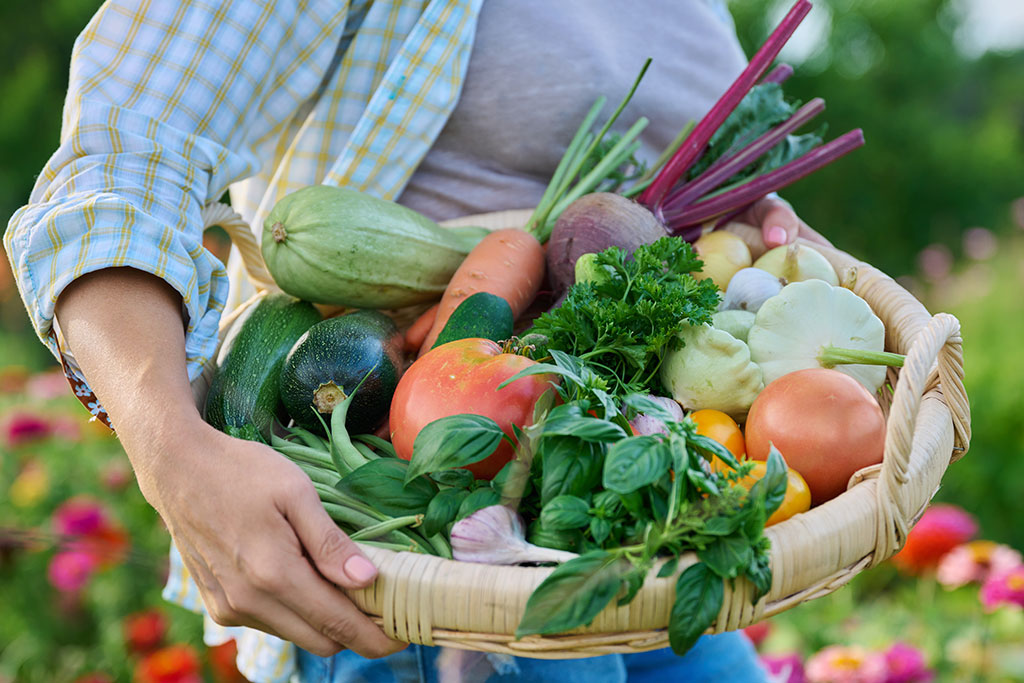
Winter-ripened fare is often priced better too. For example, offseason options like peaches, which mature in summer, must be refrigerated or frozen for longer periods—or even shipped from other locations—to be sold in winter. Naturally, food purveyors pass those extra costs on to the consumer. You can get a much better value for pears and apples around the holidays because they’re freshly harvested in winter months.
Also, if you’d like to give Mother Nature a holiday gift, choose winter produce for its lower environmental impact. Sourcing food seasonally may reduce the greenhouse gas emissions attributed to long-term food storage and shipping. That’s even more guilt off your shoulders when you dig into your holiday meal.
Savory soups and salads
These appetizers are among the most versatile foods for healthy eaters, particularly because they tend to be vegetable based. Leafy produce like cabbage, Swiss chard, and collard greens are crisp and flavorful in winter, and these foods can either form the bulk of salads or be wilted into soup broths for extra nutrients. Additionally, there are abundant seasonal soups that are based on winter squashes such as sugar pumpkin, acorn, and butternut varieties. Roast and puree just about any of these to create a smooth and scrumptious appetizer. Mix in cream for a silky texture (or stick to dairy-free alternatives like chicken or vegetable broth), and then top each bowl with fresh herbs and roasted pumpkin seeds.
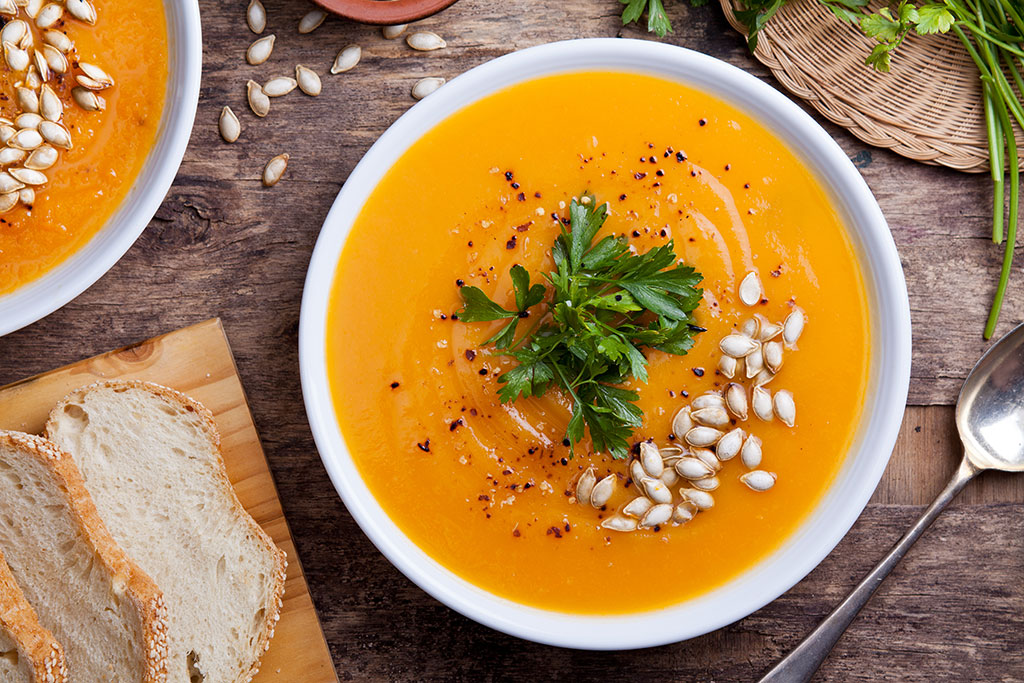
Scrumptious sides
Lovers of classic holiday sides, rejoice: potatoes are ripe for the picking—and frying, boiling, roasting, and sautéing—in winter. That means you can enjoy helpings of mashed potatoes, herb-roasted potatoes, and sweet potato casserole while also benefiting the environment, if not your diet. Feel free to embrace all these staples at your holiday table; guests will probably expect them.
Surprisingly, green beans are actually well past their peak season by the time the winter holidays roll around, but you have many other healthy supporters to choose from. For example, spaghetti squash’s signature noodle-like flesh makes the perfect substitute for pasta in casseroles like creamy “mac” and cheese. And for virtually effortless sides, simply season and roast ripe winter produce like beets, brussels sprouts, and parsnips (the subtle, licorice-flavored relatives of carrots).

Enhanced entrées
It’s easy to pop seasonal produce into your main meat dishes too. The class of vegetables and herbs known as aromatics can boost your turkey, ham, stuffing, and other entrées with plenty of nutrients—as well as provide a pleasant aroma that lends these dishes a deeper, more satisfying flavor. Fresh options around the holidays include celery, carrots, onions, and leeks. These flavorful vegetables all pair together wonderfully, and they can even help keep foods moist as they bake for hours upon hours. Tie it all together with fresh, in-season herbs like rosemary and sage for a rustic flavor and deep fragrance your guests will absolutely love.
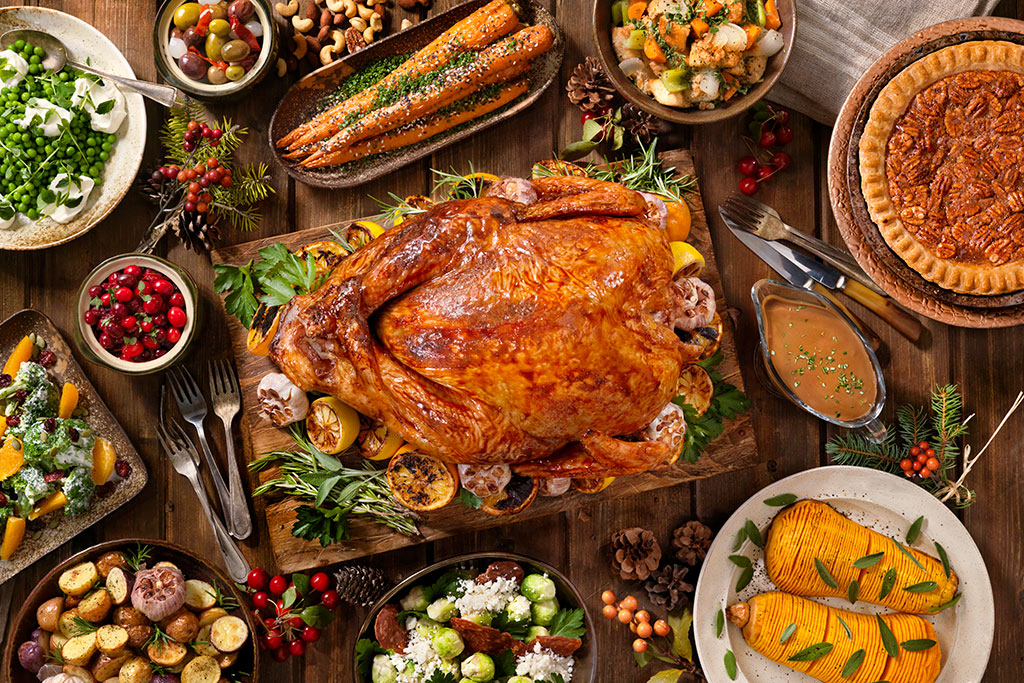
Delightful drinks
Rather than stocking bottles of soda for your guests, whip up some healthy holiday drinks to toast with. For a traditional American recipe straight from New England, brew homemade apple cider with a touch of orange and warm spices like cloves and cinnamon sticks. Or provide your adult guests who imbibe a variety of cocktails made with fresh fruit juice, including classic holiday favorites like warm mulled wine. Then use other seasonal fruits such as grapefruit and kiwi to punch up bar favorites from old-fashioneds to Moscow mules.

Decadent desserts
There’s no such thing as an innocent dessert, unless your perfect conclusion to a meal is simply a plain fruit salad. (Needless to say, offering this alone won’t make you a very popular host.) However, there are wonderful seasonal fruits that lend themselves perfectly to holiday baked goods, including dates, pears, and apples. Incorporate nature’s candy into pies, cobblers, or tarts for generous servings of nutrients—and attractive coloring too.
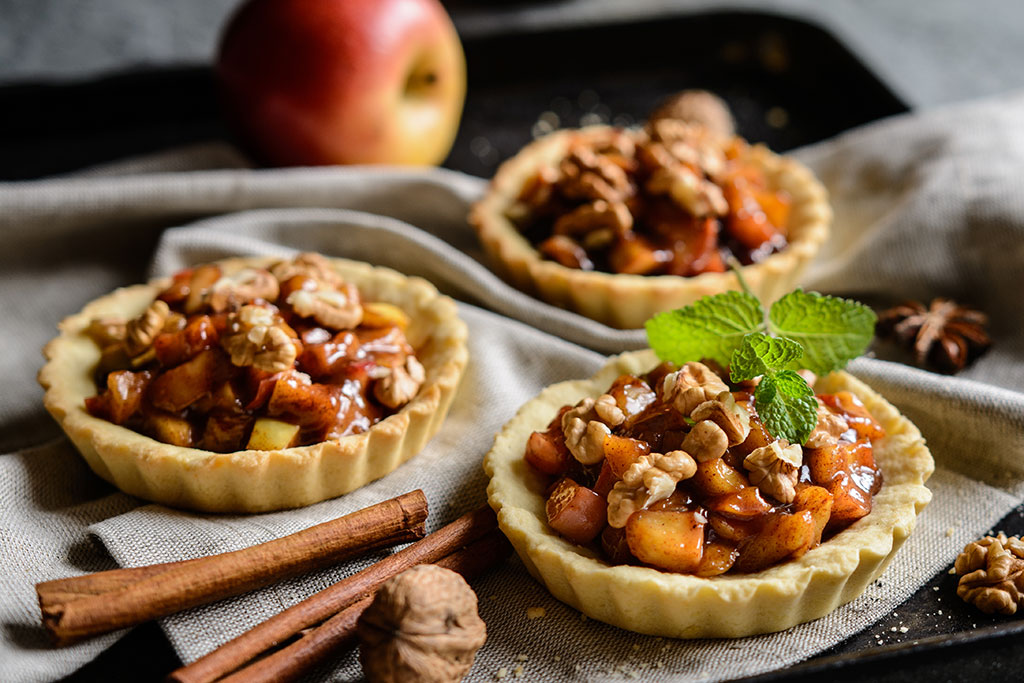
Of course, just about all fruit-based desserts will call for a hearty helping of unhealthy ingredients such as sugar, heavy cream, and butter, but don’t lose the spirit of the season. Treating yourself to a sensible portion of holiday desserts is an excellent way to celebrate with loved ones. Plus, if you use the prior tips to make your other holiday courses more nutritious, then you’ll deserve a sweet reward.



